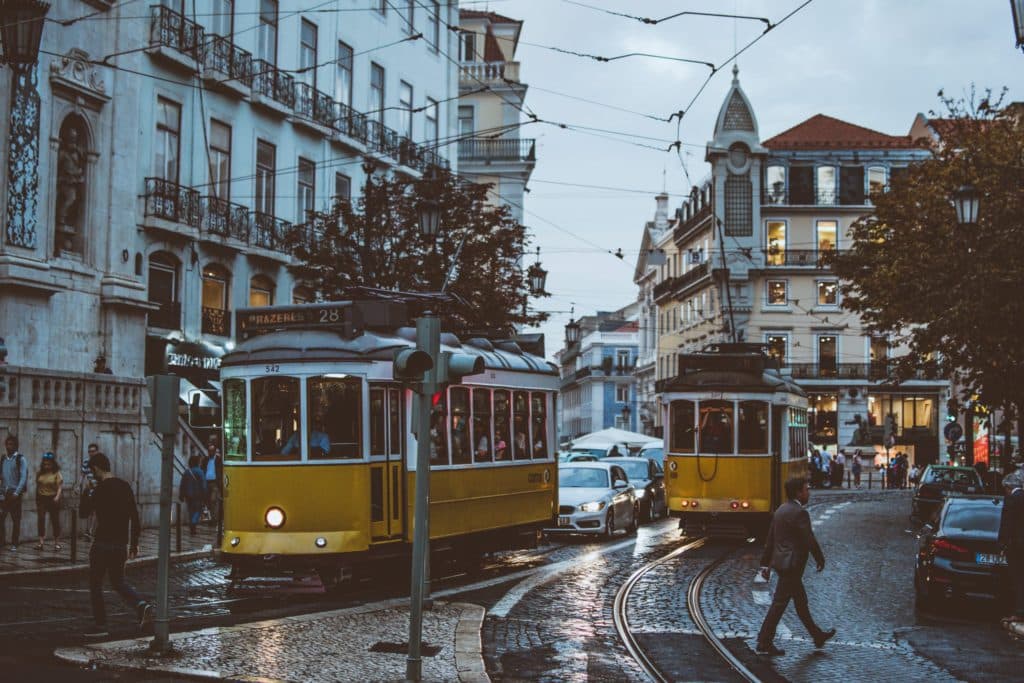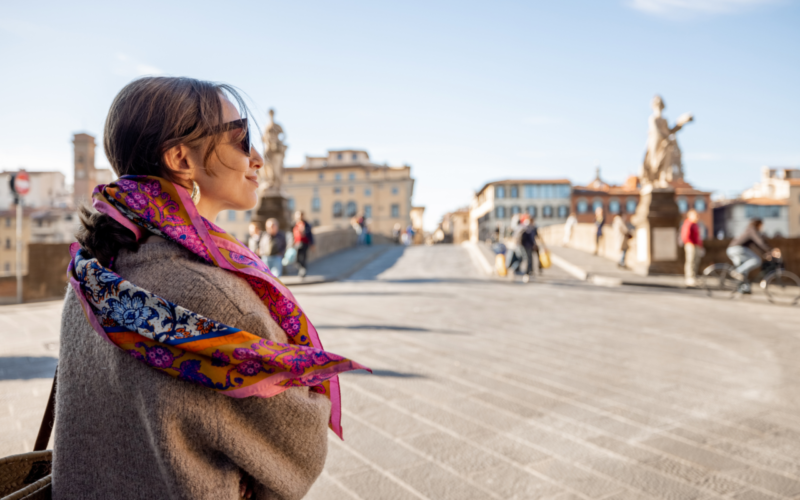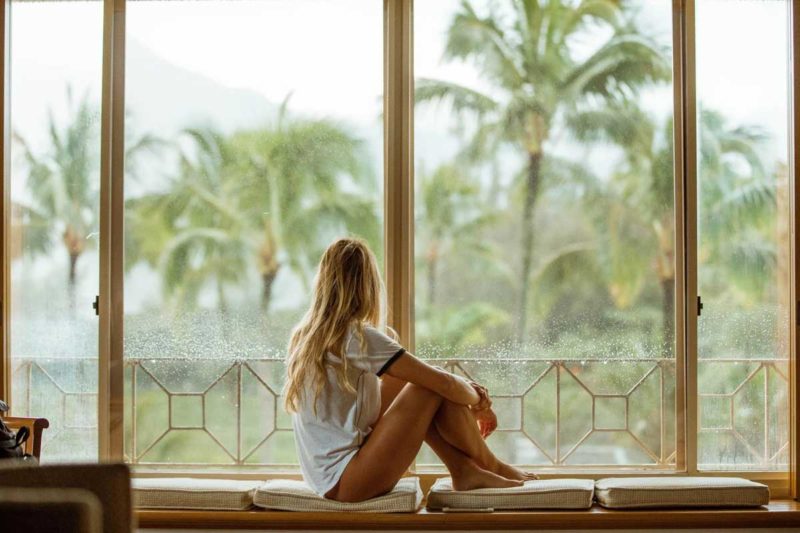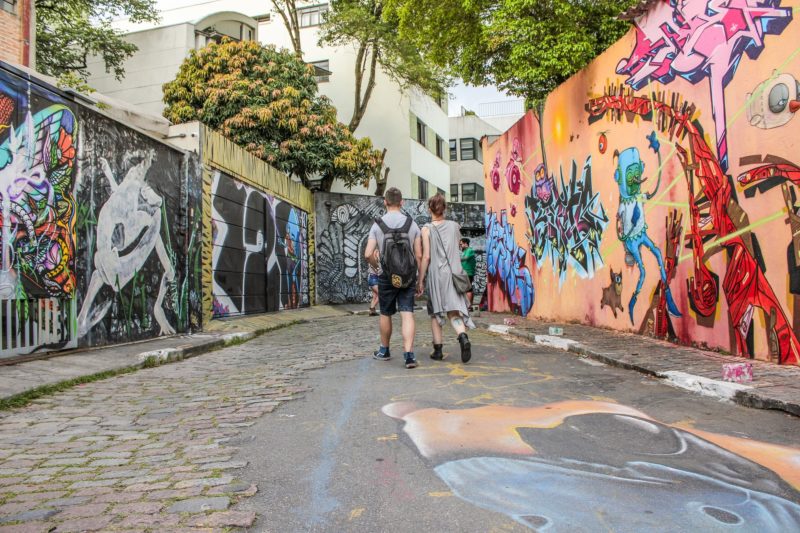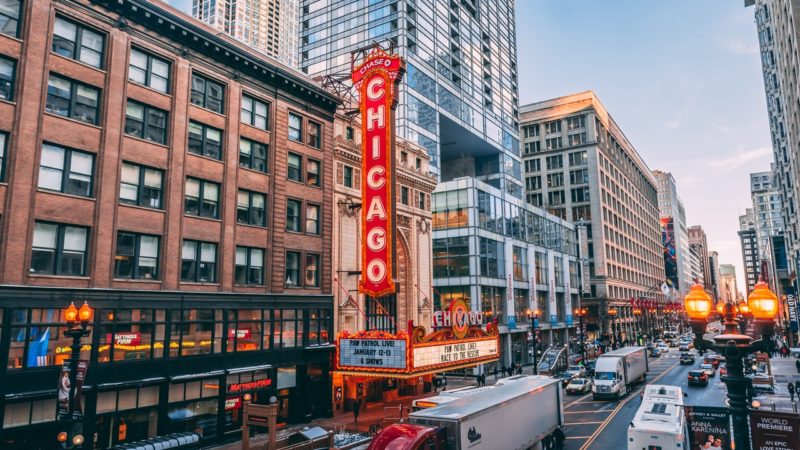Lisbon, Portugal is a feast for the senses. Everywhere you look there are beautiful colors, unique architecture, street art, stylish people, dogs barking, trams braking, and the smell of fresh baked croissants. It’s hard not to fall in love with Lisbon. What makes it so great isn’t simply the plethora of things to do in Lisbon – a thriving metropolitan set atop a sparkling river bank with year round sun. No – what makes Lisbon truly special is the people and their love for their home.
I vividly remember every interaction with a Lisbonite. The waiter I met while dining al fresco in LX factory shared with me a beautiful description of his Lisbon. I asked him what he thought about living in Lisbon, to which he responded, “Lisbon is the best place in the world. You’ll struggle to find someone here who isn’t content because we have everything — the sun, the mountains, the ocean, the city, culture, and art. We lack nothing.” LX factory is a revitalized industrial space that hosts some of the coolest art installations, thrift shops, and things to do in Lisbon. It didn’t take me more than a few days of exploring Lisbon to whole-heartedly agree with his analysis.

Lisbon is one of Europe’s oldest cities. Most of its many historic structures remain intact perhaps in part due to Portugal’s neutrality in the world wars. Though these historic sites were able to avoid being bombing targets, they couldn’t all escape nature. One of the most interesting things to do in Lisbon is to marvel at the ancient architecture and statues as you walk around. While wandering the city you’ll often hear locals refer to the earthquake. You’ll notice that the historic district is filled with pathways that twist and turn among its crumbling structures. The city is visibly split from the earthquake where Alfama and Alto meet.
To our surprise, it turns out that the earthquake, and the tsunami and fire that followed, responsible for the city’s current state actually took place in 1755. The earthquake is also the inspiration behind many of the tiled buildings in Lisbon. During Lisbon’s reconstruction in the late 1700s, the Marquis of Pombal chose a plan that included covering the new buildings in tiles because they were waterproof, flame resistant and cheaper than stone.
Combatting Overtourism in Lisbon
You’ll quickly notice graffiti and street art covering the city, even on the most historic monuments. Much of this is political and done by the people in resistance to their government. First, it was against the horrific dictatorship that only ended in the seventies. Now, the street art rebels against gentrification – something that tourism has played a role in.
Lisbon has attracted visitors for centuries but its economic reliance on tourism grew immensely in the last decade. In 2011, Portugal was experiencing a recession. At the same time, the tourism industry across Europe began to boom. Tourism suddenly became an industry in Portugal that was not only stable, but growing. Developers bought properties, homeowners were able to rent out of their desirable homes on Airbnb instead of foreclosing, the demand for tour guides shot up, and business owners had a larger customer base. A decade later though and tourism has become a controversial topic in Lisbon.
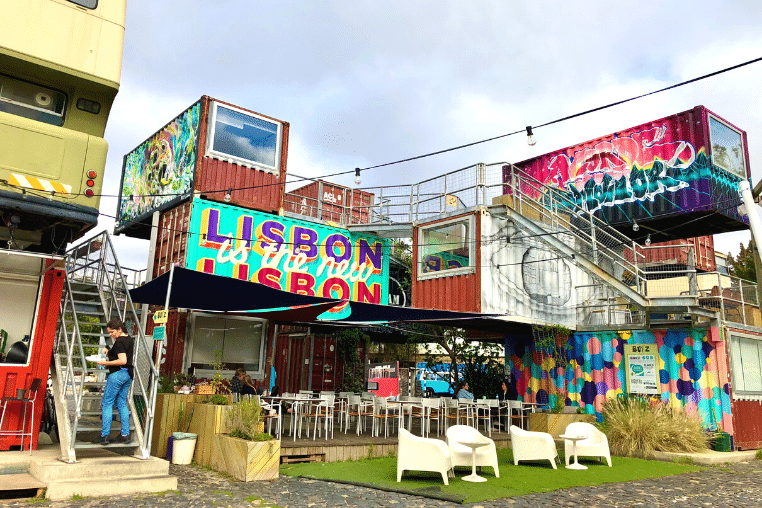
News and stories about this boom in tourism are heard everywhere, from an Uber ride to a guided tour. I met one Uber driver who left his full time job during the economic crisis to work in tourism. After telling me he loved tourism however he continued with, “tourism is ruining the city,” as we drove through the crowded center, Baixa Chiado. Chiado is the city’s heart — home to some of the best things to do in Lisbon. “No one lives in Chiado anymore- there’s more airbnbs in this city than you can imagine. Most Lisbonites can’t even afford to live in the city, or they move out because it’s too chaotic and noisy,” he continued.
Today, only the elderly remain, but are constantly getting offers to sell their homes to developers. “Look, we want tourists and it saved our city but it’s getting out of control. Soon it will only be tourists serving tourists in this neighborhood and then the magic of Lisbon will no longer exist.” He concluded before I got out of the car.
Throughout the city, the responses you get are very similar to this conversation with my Uber driver. People appreciate what tourism has done, but fear of what it’s going to do. As my local friend, Ligia Gomes, a student and blogger of sustainable travel, explains: “Tourism is a good thing overall but there is still tension between the locals. I just think there has to be some rules or there will be no culture or tradition left.”
The government agrees and has begun to address the negative effects of Overtourism, starting with higher taxes and limits on Airbnbs.
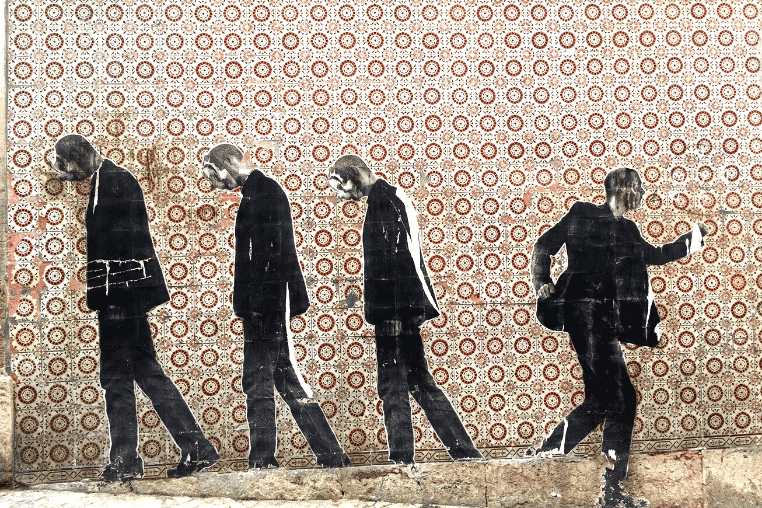
Where to Stay in Lisbon:
In Lisbon, many locals feel that Airbnb rentals specifically are largely responsible for pushing people out of the city. Due to the problems that short term accommodation rentals pose for the locals in Lisbon, it’s best to think outside of the Airbnb box when choosing a place to stay. You can find several locally run or sustainable hotels in the city.
Tucked away in the heart of Lisbon, Impact House prides itself on its innovative initiatives rooted in the circular economy, all achieved through fruitful partnerships with local non-profit organizations. The hostel serves as a vibrant hub of communal living, featuring generous shared spaces, a refreshing swimming pool, and a dedicated room for a medley of activities. The eco-hostel is committed to offsetting 100% of its CO2 emissions, with a vision to achieve carbon neutrality by the year 2030.
Sporting a Green Key certification, Neya Lisboa Eco Hotel is situated about a 15-minute walk away from Marquês de Pombal Square and the beginning of Avenida da Liberdade. The hotel heats its water through solar panels, is on a steadfast journey towards achieving plastic-free status, encourages its staff to cycle to work, and offers guests the use of bicycles.
To avoid some of the tourist-heavy areas like Belem, Baixa Chiado, Barrio Alto and parts of Alfama, I highly recommend staying in Estrela, Principe Real or Sao Bento. Here you’ll experience some of the more local things to do in Lisbon but you’ll still be walking distance to the center and on numerous transit lines.
Things to Know Before Visiting Lisbon:
- Tipping is not expected. You should only tip if something is absolutely spectacular.
- Lunch is a big deal – expect a set menu with espresso and wine. Post lunch, people enjoy siesta before returning to work so most places will be closed during that time.
- People eat very late in Lisbon – 9 pm is the typical dinner rush.
- Eating is one of the best things to do in Lisbon, and it’s meant to be a shared experience. As they say, no rush, no service.
- Don’t expect places to do take-away, this is such a foreign concept for Lisbonites that most places don’t offer it.
- Drinking on the street is legal and common. This quickly became one of our favorite things do to in Lisbon.
- Most restaurants have bread, cheese, and olives waiting for you on the table but they are not complementary. If you touch, you have to buy.

22 Sustainable Things to do in Lisbon, Portugal:
- Use local transit for your adventures! Lisbon is filled with green transportation options. You have electric tuk tuks, the tram, the bus and the metro, plus the city is so walkable.
- There may be numerous things to do in Lisbon, but just outside of the city, you’ll find even more! Use public transit to take a wonderful day trip to Sintra, Cascais, Porto or Lagos. These coastal cities are only a few hours away, and should not be missed. And if you make it to Cascais, be sure to stay at the Luna House, a community-oriented B&B with a coworking space on-site.
- Explore Lisbon’s oldest neighborhood, Alfama, with a local guide. Support local restaurants here.
- See a traditional Fado concert, Lisbon’s oldest type of music. This is one of the more unique and traditional things to do in Lisbon. Check out Rua do Capelão in Mouraria for authentic performances. As a heads up, it’s considered incredibly disrespectful to speak or get up while the singer is performing.
- Take a tile painting class with a local artist instead of buying a tile. Sellers have been stealing tiles from the buildings because they can sell them for a high price. Most tiles you find in thrift shops or circulating around are actually stolen.
- Work with local tour operators to give back while on the road, or to take sustainable tours in Lisbon. IVHQ offers things like environmental scuba diving, and forest restoration.

- Visit the Museum Aljube Resistência e Liberdade to learn about the horrific crimes committed by the Portuguese government on women and immigrants during the dictatorship from 1932-1974.
- Take a local street art tour to understand the political history and resistance of the people.
- Lisbon is known for its fresh seafood. Support local vendors and local restaurants when eating seafood — my favorite is Santa Bica.
- Pick up goodies from the local mercados and have a riverfront picnic as the locals do.
- Watch the sunset from Miradouro da Nossa Senhora do Monte or Santa Catarina. Bring some wine and join the locals partying into the night.
- Visit the oldest bookstore in the world, Bertrand. While it’s become a tourist attraction, most tourists just stop to take a photo. Please buy something, or enjoy a coffee at their cafe, to support this business.
- Visit Fernando Pessoa’s former home to learn about his influence on Lisbon. Enjoy an espresso and get some reading done at the cafe downstairs.
- Choose to visit Lisbon outside of peak season (May-September). This is a great way to travel without contributing to overtourism.
- If you’re into ecotourism, attend a beach clean up with Brigada Do Mar. As a fishing port, Lisbon experiences issues with human trafficking on fishing boats, and pollution from commercial fishing boats. Brigada works against this.
- Shop at Feira da Ladra, an incredible flea market.
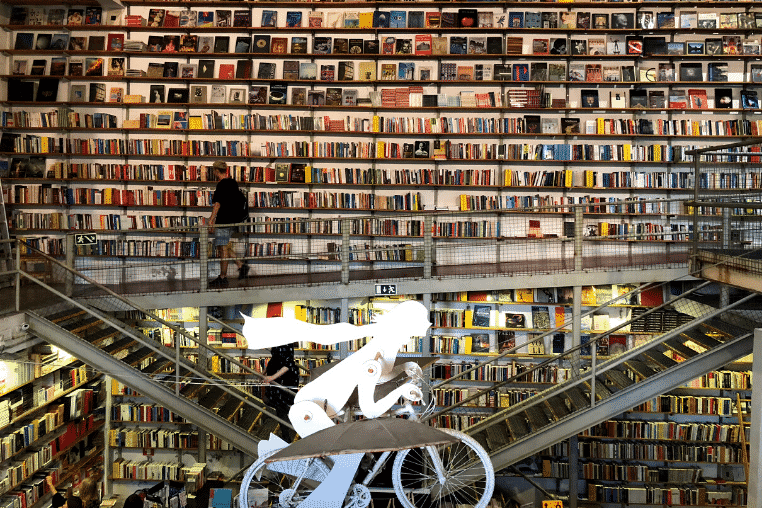
- Thrift your way through LX Factory. They have a massive flea market on Sunday’s.
- Take a local cooking class.
- Don’t be afraid to go off the beaten path when it comes to eating. Lisbon has an extravagant dining scene that can be very touristy. Some of the best croissants, lunch specials and meals I had were in non discrete little restaurants that barely had a sign. These are the best places to eat and support the locals.
- Eat as much traditional food and drink as you can! My favorites are bacalhau (salted cod), grilled octopus, pastel de nata, gelato, vinho verde, and of course, espresso.
- Buy some ginjinha in alfama. It’s a red cherry liquor that women sell from their windows. Get it in a chocolate cup!
- Spend time in the numerous beautiful parks throughout the city, like Jardin de Estrela, Jardim Botânica Lisboa, Jardim de cerca de Graça. This is one of the best things to do in Lisbon. You’re always near an incredible viewpoint or park, just google parque for parks and miradouro for viewpoints to find the closest one to you.
Sustainable Shopping in Lisbon
In Lisbon, sustainable shopping is brought to life by unique stores that cater to the eco-conscious buyer.
At Organii, you’ll find a wide range of organic and ethical skincare and cosmetic products. They carry brands that emphasize natural, cruelty-free ingredients and sustainable packaging.
Flamingos Vintage Kilo is a haven for lovers of sustainable fashion. Here, vintage clothing is sold by weight, and you can find unique, stylish pieces that tell a story while minimizing your fashion footprint.
Maria Granel is Portugal’s first zero-waste store. Nestled in the heart of Lisbon, this grocery store allows you to buy organic, locally-sourced food products in bulk. Simply bring your own reusable containers and fill them up.
For unique souvenirs, A Arte da Terra is an artisanal shop in Alfama district offering a range of handmade goods crafted by local artisans, from pottery to cork products.
Day Trips from Lisbon, Portugal
The Enchanting Sintra: Castles and Palaces Galore
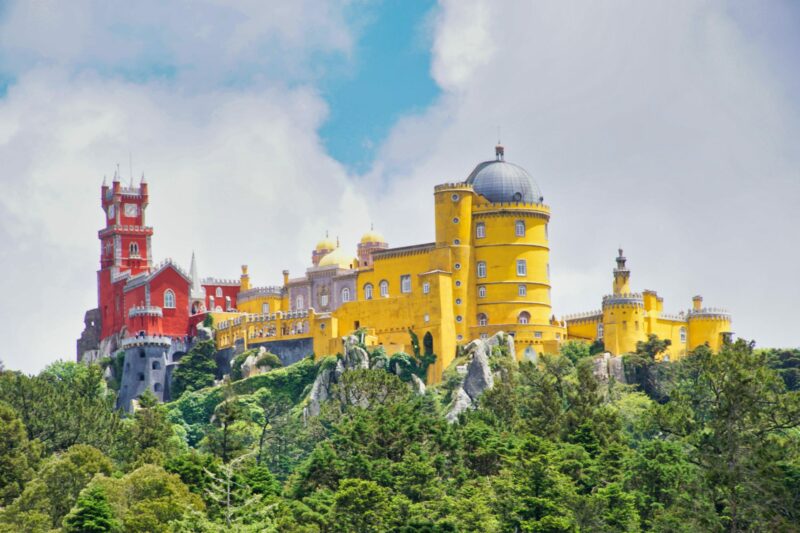
If there were ever a place that could whisk you away to a fairytale realm, it’s Sintra. Nestled in the misty, forested hillsides, Sintra is a surreal blend of whimsical palaces, turreted castles, and sprawling gardens, all wrapped in an air of mystique.
The Pena Palace, with its vivid hues and extravagant design, is the undeniable crown jewel of Sintra. It’s as if all the world’s architectural styles got together and decided to throw a lavish, unapologetic party. Don’t miss the chance to wander through the labyrinthine Moorish Castle, a testament to a bygone era, offering panoramic views of the verdant countryside.
Cascais: A Seaside Getaway

From the mountains to the sea, your next stop is Cascais. This former fishing village turned stylish resort town is an oasis of sun-kissed beaches, vibrant cafés, and soul-soothing seascapes.
While you’re here, embrace the laid-back coastal lifestyle. Dip your toes in the sand at Praia da Rainha, a beach hidden away like a precious secret. Explore the cobbled streets and discover the town’s blend of traditional houses and modern boutiques. And, as the day draws to a close, find yourself a spot at a seafront restaurant, indulge in a fresh seafood feast, and watch the sun paint the sky as it sets over the Atlantic horizon.
Óbidos: A Step Back in Time
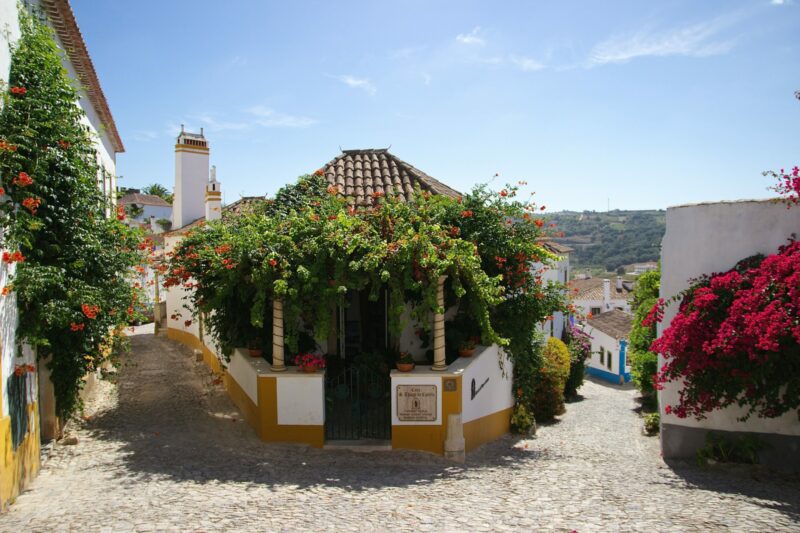
Finally, round off your trip with a visit to Óbidos, a delightful walled town that time forgot. The moment you step through the town’s imposing gates, you’ll feel like you’ve been transported to medieval Portugal.
With its narrow, winding streets, whitewashed houses adorned with vibrant flowers, and the impressive castle perched on top, Óbidos is a dream for history buffs and romantics alike. And while you’re wandering the charming streets, don’t forget to sample a glass of Ginja, a local cherry liqueur often served in a chocolate cup. It’s the perfect toast to an unforgettable trip!
Frequently Asked Questions (FAQs)
Do They Speak English in Lisbon?
Yes, they certainly do. English is widely spoken in Lisbon, especially in hotels, restaurants, and other tourist-oriented establishments. Younger generations, in particular, are often fluent in English. That said, picking up a few basic Portuguese phrases can enhance your travel experience and is always appreciated by locals.
Is Lisbon a Safe City for Tourists?
Lisbon is generally a safe city, but like any popular tourist destination, it’s important to stay vigilant and keep an eye on your belongings. Pickpocketing can occur in crowded tourist areas and on public transportation, so keep your possessions secure and maintain a keen awareness of your surroundings. The city is generally safe to walk around, even at night, but always use common sense and avoid poorly lit or deserted areas.
What is the Best Way to Get Around Lisbon?
Trams are one of Lisbon’s charming signatures, with Tram 28 being a tourist favorite. It trundles through the city’s most picturesque neighborhoods, offering sightseeing on the move. Buses and metros are also widely available, and taxis or rideshare apps are an affordable option for a more private commute. And let’s not forget about the funiculars and lifts, like the iconic Santa Justa Lift, which provide a unique mode of transport and a fantastic way to conquer those steep hills.
When is the Best Time to Visit Lisbon?
Spring (March to May) and fall (September to November) are considered the best times to visit. The weather is generally warm and pleasant, and the city is less crowded than in the peak summer months which can be very hot! Winter in Lisbon is mild compared to most European cities, with temperatures rarely dropping below 50 degrees Fahrenheit (10 degrees Celsius). It’s the perfect time for travelers who prefer to avoid crowds and want to experience Lisbon at a more leisurely pace.



